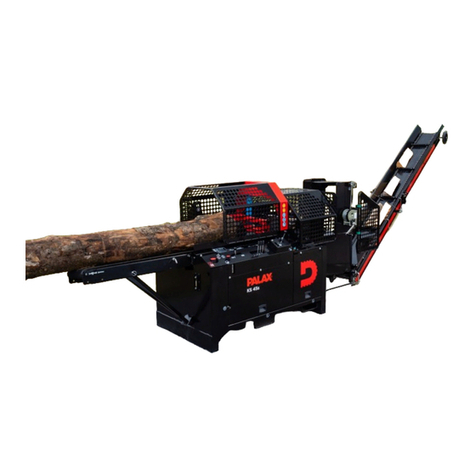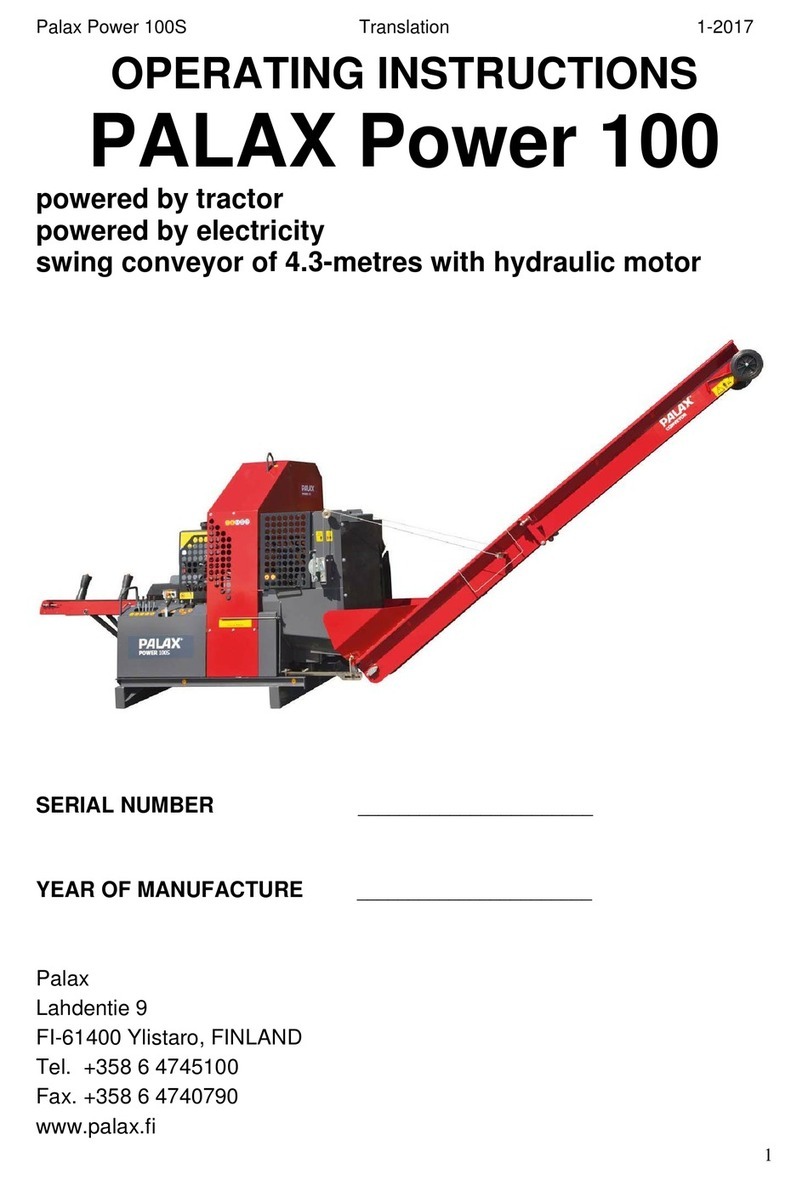
Ohjekirja Palax combi M 2004.1 En
4
4.3 DURING THE OPERATION ..................................................................................................................................... 19
4.4 PLACING THE WOOD ON THE DECK ...................................................................................................................... 19
Right, the log is supported by the rollers, Figure 18............................................................................................... 20
4.5 CROSS-CUT OPERATION....................................................................................................................................... 20
4.6 DISTURBANCES DURING CROSS-CUT OPERATION AND THEIR REMEDY................................................................. 20
Crooked trees .......................................................................................................................................................... 20
Big trees .................................................................................................................................................................. 20
4.7 CUTTING THE SMALL TREES ................................................................................................................................20
5 USE OF THE FIREWOOD PROCESSOR, SPLITTING OPERATION........................................................ 20
5.1 SPLITTING CYLINDER .......................................................................................................................................... 20
5.2 MANUALLY-OPERATED HIGH-SPEED VALVE, FIGURE 20 ..................................................................................... 20
5.3 AUTOMATIC HIGH-SPEED VALVE ......................................................................................................................... 21
5.4 SPLITTING WEDGES ............................................................................................................................................. 21
Short, straight wedge, optional ............................................................................................................................... 21
In 2/4 ways, standard .............................................................................................................................................. 21
In 2/6 ways, option .................................................................................................................................................. 21
5.5 MANUAL ADJUSTMENT OF THE SPLITTING BLADE, FIGURE 21............................................................................. 21
5.6 HYDRAULIC HEIGHT ADJUSTMENT OF THE SPLITTING BLADE, OPTIONAL ............................................................ 21
5.7 ADJUSTING THE SPEED OF THE SPLITTING BLADE ADJUSTMENT CYLINDER, FIGURE 23 ....................................... 22
Adjustment............................................................................................................................................................... 22
5.8 DISTURBANCES DURING THE SPLITTING OPERATION AND THEIR REMEDY ........................................................... 22
Stuck wood .............................................................................................................................................................. 22
5.9 RE-SPLITTING THE LOGS SAFELY ......................................................................................................................... 22
5.10 HOW THE SAFETY FEATURES AFFECT THE OPERATION OF THE MACHINE ........................................................ 22
Foot pedal, Figure 24 ............................................................................................................................................. 22
Protective cover of splitting trough, Figure 25 ....................................................................................................... 23
6 OPERATION OF THE SPLITTING DEVICE.................................................................................................. 23
6.1 SENSOR, FIGURE 26 ............................................................................................................................................ 23
6.2 PARTS OF THE SPLITTING DEVICE, FIGURE 27...................................................................................................... 23
6.3 OPERATIONAL PRINCIPLE OF LAUNCHING............................................................................................................ 23
6.4 HAND-START OF THE SPLITTING MOTION, FIGURE 28.......................................................................................... 23
CONTROLS OF THE HYDRAULIC VALVE ......................................................................................................................... 24
Tightener, part 1 ..................................................................................................................................................... 24
Locking lever, part 2 ............................................................................................................................................... 24
Launching rod, part 3 ............................................................................................................................................. 24
Control lever, part 4................................................................................................................................................ 24
Hydraulic valve, part 5 ........................................................................................................................................... 24
Launching spring, part 6......................................................................................................................................... 24
Launching lever, part 7........................................................................................................................................... 24
Adjustment mark, 8 ................................................................................................................................................. 24
7 MAINTENANCE OF THE MACHINE.............................................................................................................. 24
7.1 CROSS-CUT SAW-BLADE...................................................................................................................................... 24
Removing the cross-cut saw-blade, Figure 30 ........................................................................................................ 24
Sharpening the blade, hard-metal blade ................................................................................................................. 24
Pre-stressing the saw-blade, hard-metal blade....................................................................................................... 25
7.2 GUIDE OF CROSS-CUT SAW-BLADE, FIGURE 31 ................................................................................................... 25
Adjustment of the saw-blade guide.......................................................................................................................... 25
7.3 V-BELTS OF THE ANGULAR GEAR, FIGURE 32...................................................................................................... 25
Tightening the belts................................................................................................................................................. 25
Replacement of the V-belts, angle gear, Figure 33................................................................................................. 26
7.4 CHANGING THE OIL IN THE ANGULAR GEAR ........................................................................................................ 26
7.5 LUBRICATING THE MACHINE, FIG 34................................................................................................................... 26
7.6 ADJUSTMENT OF THE CONVEYOR BELT ............................................................................................................... 26
Tightening the conveyor belt, Figure 35 ................................................................................................................. 26
Sideways adjustment of the belt, upper end ............................................................................................................ 27
Sideways adjustment of the belt, lower end, Figure 36 ........................................................................................... 27
7.7 CLEANING THE CONVEYOR.................................................................................................................................. 27
6.8 WASHING THE MACHINE ..................................................................................................................................... 27
7.9 STORING THE MACHINE. ...................................................................................................................................... 27
8 MAINTENANCE SCHEDULE ........................................................................................................................... 28





























